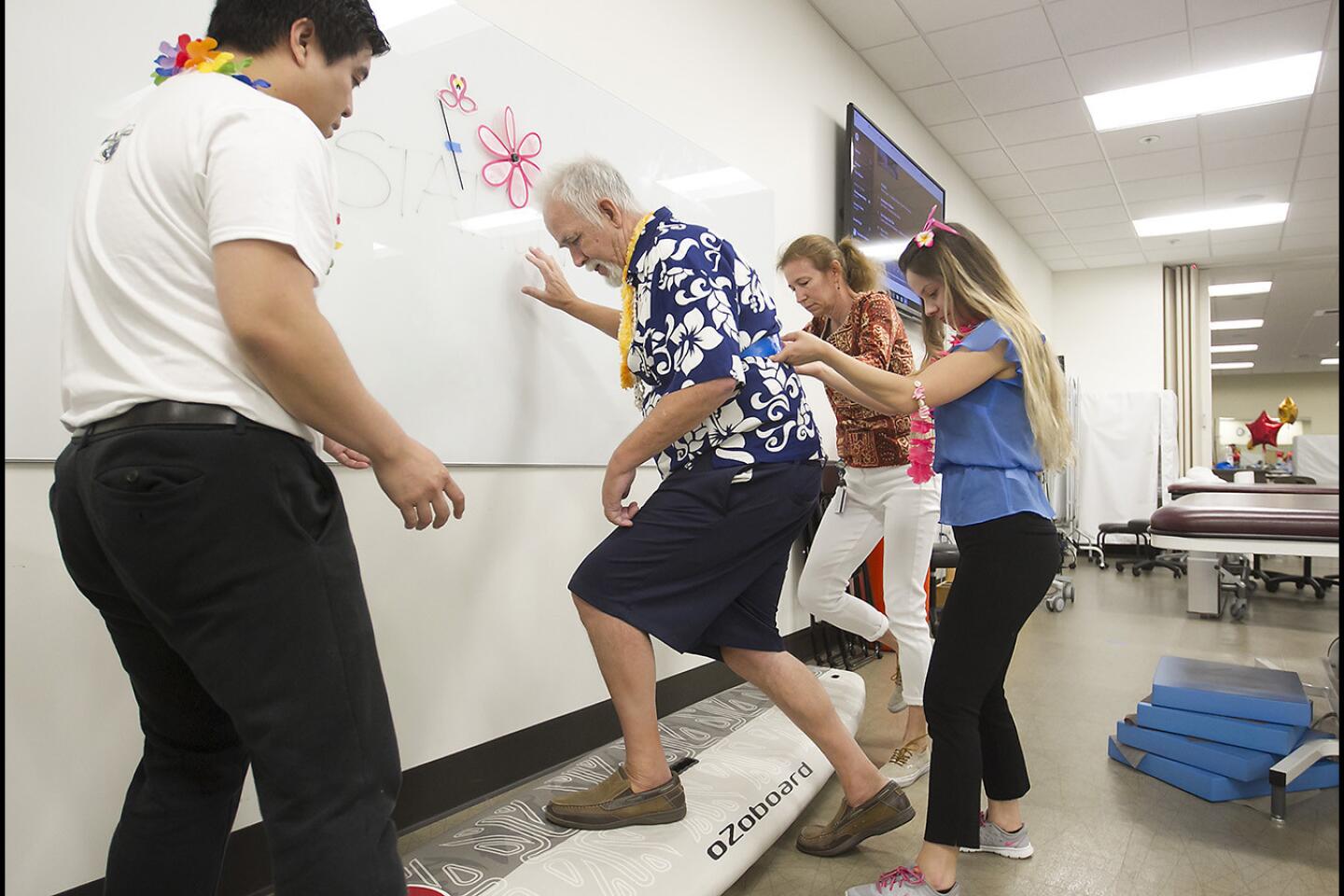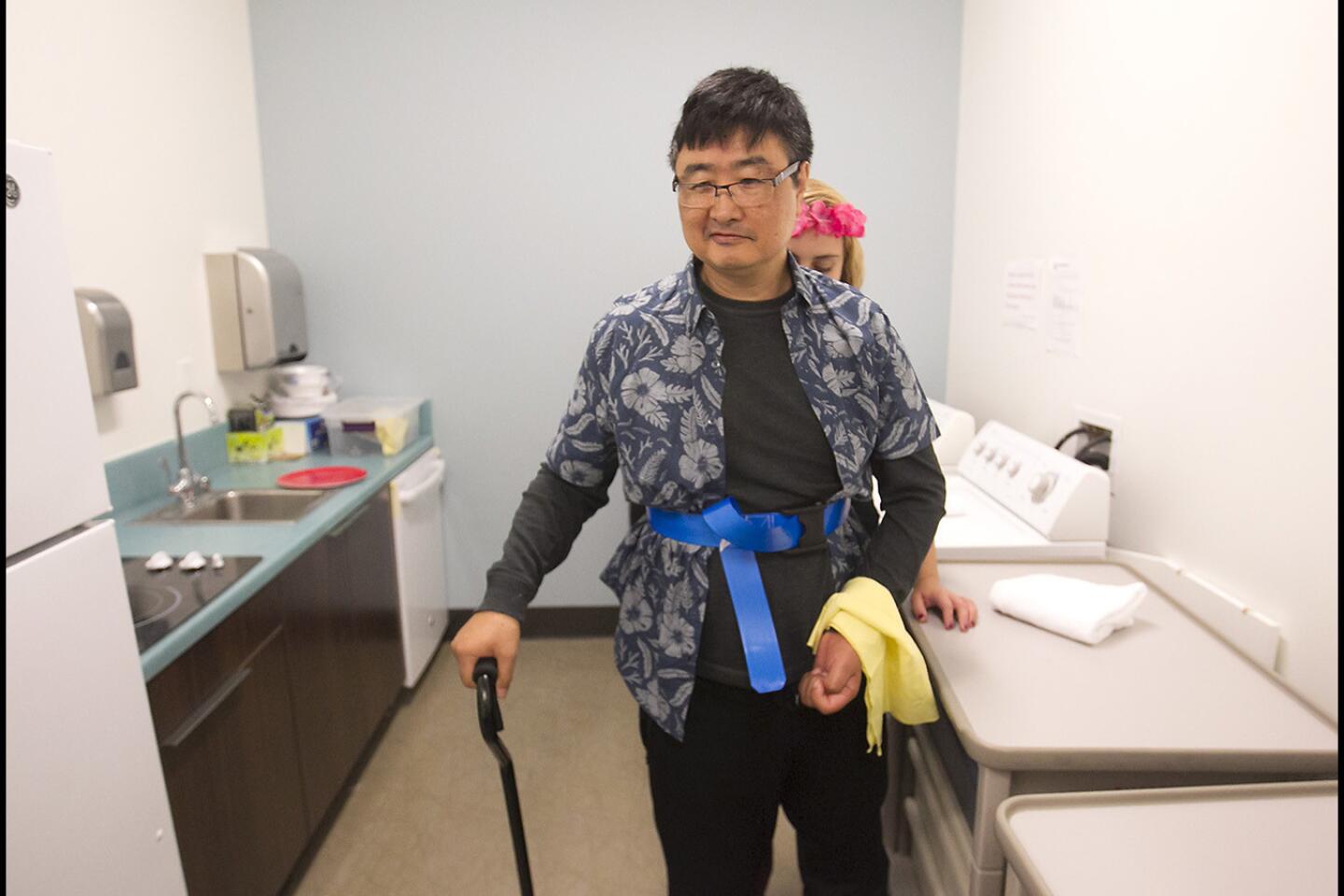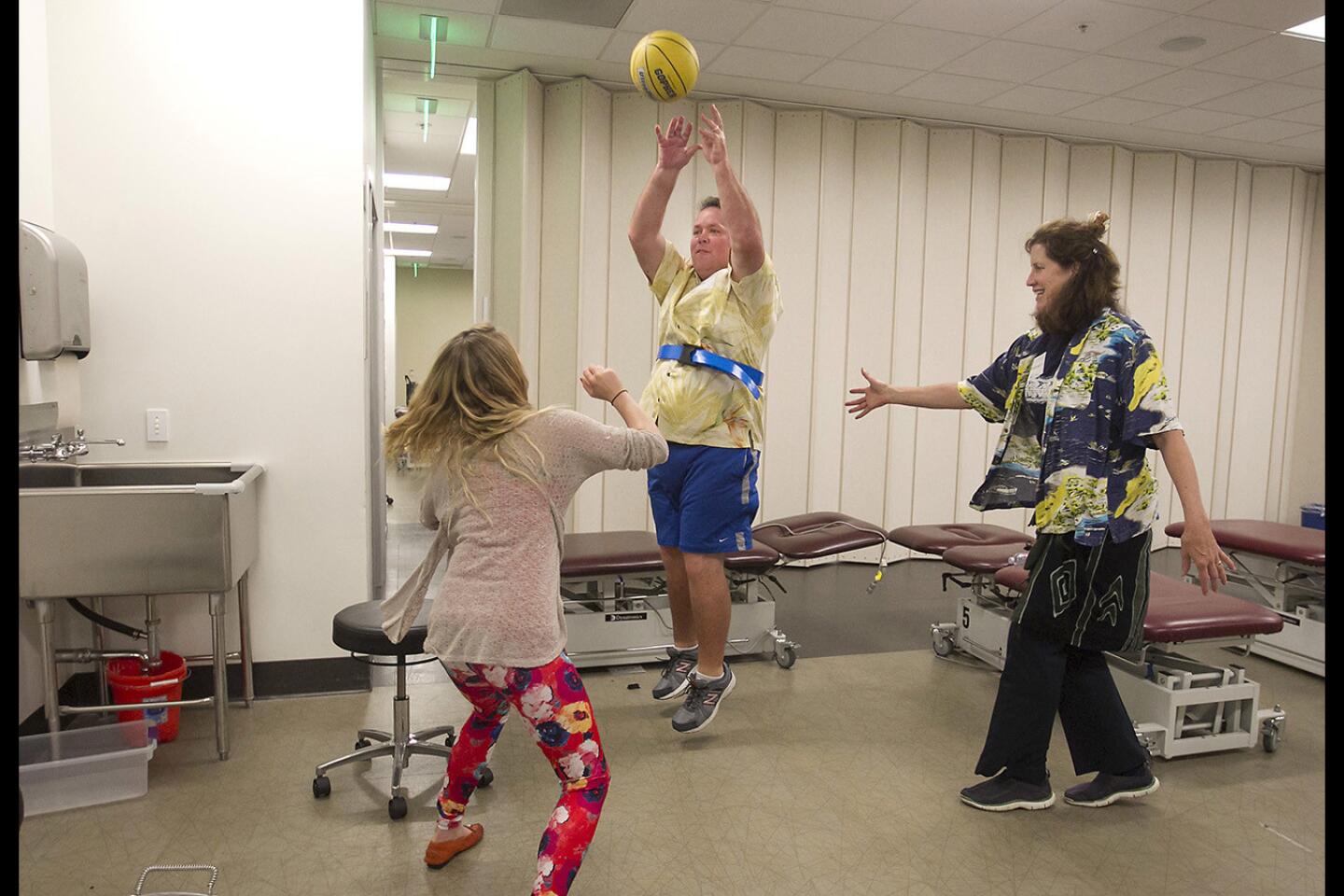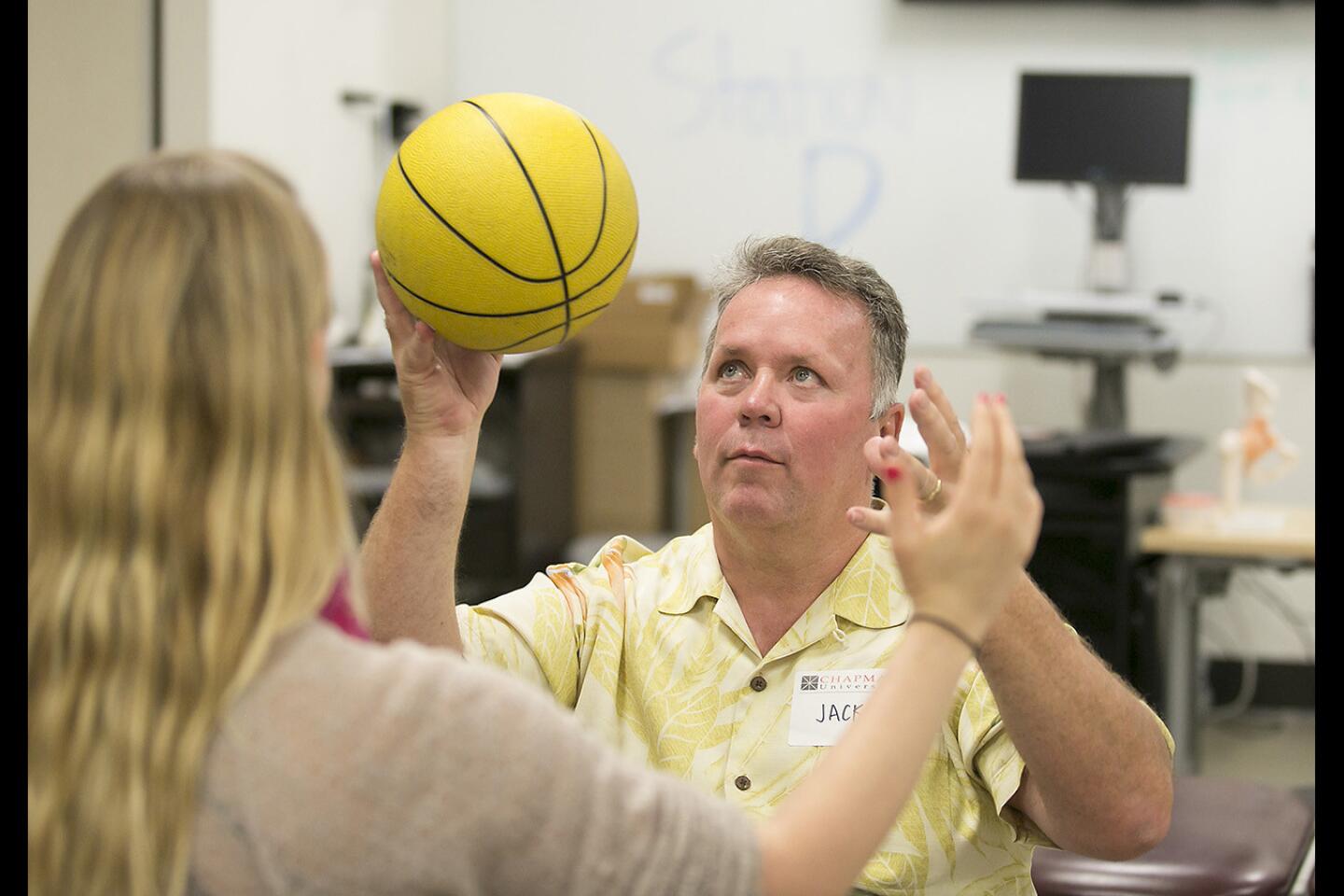Chapman University’s stroke recovery boot camp helps patients in fun and creative ways
While the goal of medical professionals and patients is to prevent a stroke, the reality is many people do experience the sometimes catastrophic event and Chapman’s stroke recovery boot camp is designed to bridge some of the gaps in healthcare for people adapting to the many changes in their lives.
For 12 days twice a year, Chapman University’s department of physical therapy holds a free boot camp offering intensive rehabilitation for patients, helping them relearn how to do daily activities as well as improve balance and mobility.
The latest camp ran from June 12 to 23 at the Rinker Health Science Campus in Irvine and included faculty, students, family members and stroke patients. It started six years ago as an annual event.
Demand and increased student helpers has allowed the program to grow to twice a year and increase the number of campers who can attend.
The program is organized by Chapman physical therapy professors Alison McKenzie and Caryn Ito, and since the start has operated on a tight budget. McKenzie said she always has gone to 99 Cents Only stores for the décor used for a variety of themed days, including Olympic and luau day.
Along with rehab for patients and support for caregivers, the camp provides training for Chapman students, with its physical therapy and marriage and family therapy programs.
They have been able to grow the program to twice a year by recruiting more students from the two programs and by having the camp added to the physical therapy curriculum at Chapman.
McKenzie said the idea for the camps came as a result of her regularly coming in contact with people pre-Affordable Care Act who had suffered a stroke. She said they are often working-age adults who lost their insurance and could no longer get proper treatment.
“We wanted to meet that need for people who didn’t have access to rehab,” she said. “They would get some at the front end but then they would have limited help when they needed it to continue.”
She said one of the goals of the camp is to help people get integrated back into the community and collaborate with junior colleges and programs to help people prepare for part-time work. They act as a resource to find other resources.
Wilbert Kerr of Laguna Hills has been coming to the camp since its beginning. He said when he first showed up he couldn’t walk. He demonstrated — when he did start walking — how his left foot was bent inward forcing him to walk on its side. He said it still moves inward a little, but he can walk with his foot flat now.
This session, he was working on improving movement in his right arm.
Kerr, like many of the campers, continues to practice what they’ve learned after they go home and many go to the Goodwill Fitness Center in Santa Ana to keep improving.
Jim Eklund, of Lake Forest, was at the camp for the first time. He had a stroke five years ago and was looking for more intensive workouts. He had heard of the camp from his friends at the Goodwill gym, where he goes three days a week.
“I love it,” Eklund said, adding extra emphasis on the love.
There is individual attention and camaraderie among campers, according to the organizers. Eklund said he liked being around people who knew what he was going through.
“One of the main benefits is the social interaction,” McKenzie said. “After a stroke, their world gets very small.”
Sheri Ledbetter, interim director of Media and Public Relations at Chapman, said a common theme she hears about the program is that friendships are made and campers continue to meet up at the gym and elsewhere.
The connection and understanding doesn’t stop with the campers. The event allows caregivers time to relax, discuss concerns with each other and they’re now offered mindfulness sessions themselves.
Naveen Jonathan, marriage and family therapy program director at Chapman, has been participating in the camps for three years and has offered sessions with campers and caregivers to help with the emotional aspects of living with the life changes.
Jonathan and McKenzie said the marriage and family therapy students were added after the two were talking about the whole-body approach to care. They wanted to bring in therapy students to help with the emotional side of life after a stroke for the camper and their caregiver.
“We focus on how to manage burnout and prevent self-neglect,” Jonathan said. “We bring caregivers together and they create their own support system.”
The students also focus on helping campers with anxiety and to alleviate some stress about their physical abilities, which can boost their confidence.
McKenzie said her hope is that the program will continue to grow and more people can get the help they may not be getting through their traditional health providers. She said former students have already been a part of implementing similar programs around the world.
ALICIA LOPEZ is a contributor to Times Community News.
All the latest on Orange County from Orange County.
Get our free TimesOC newsletter.
You may occasionally receive promotional content from the Daily Pilot.













